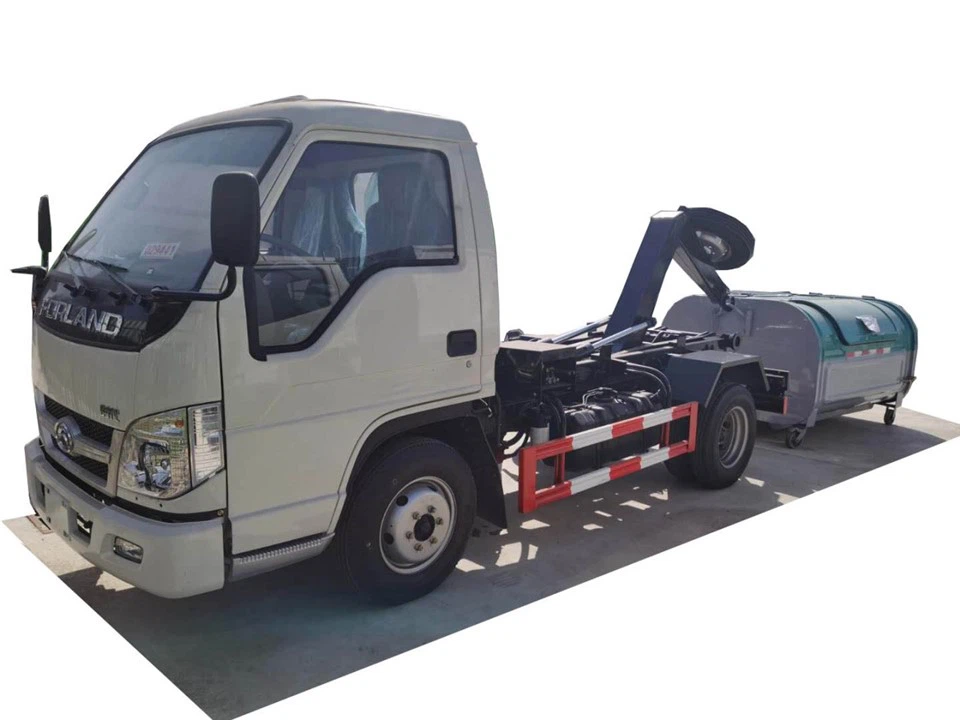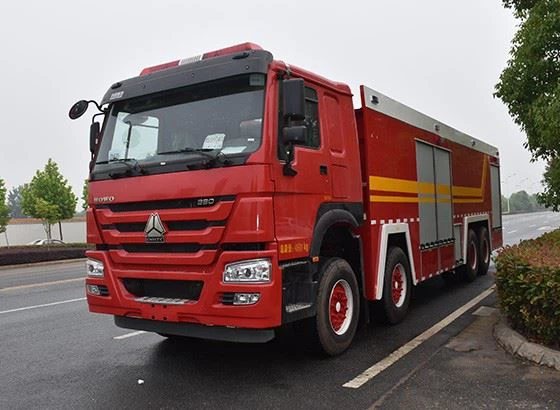The Complete Guide to Street Sweepers: Enhancing Urban Cleanliness

Introduction
Street sweepers are essential vehicles that play a crucial role in maintaining urban cleanliness and improving public health. Whether in bustling cities or quaint towns, these machines are vital for keeping streets, sidewalks, and public spaces free from debris, litter, and pollutants. This comprehensive guide will delve into the various aspects of street sweepers, their types, benefits, operational tips, and best practices. Through this exploration, readers will gain insights into the importance of street sweepers in modern urban management.
Understanding Street Sweepers

What is a Street Sweeper?
A street sweeper is a specialized vehicle designed to clean streets and other paved surfaces. These machines utilize a combination of brushes, vacuums, and water to remove dirt, gravel, litter, and other debris. Often used by municipalities, street sweepers help maintain the aesthetic appeal of urban areas and contribute to environmental sustainability.
History of Street Sweepers
The concept of street cleaning dates back to the 19th century, with horse-drawn sweeper carts being among the first invented. The first mechanically powered street sweeper was introduced in 1849 by a man named C.S. Smith. Since then, street sweepers have undergone significant advancements, evolving into sophisticated vehicles equipped with various features and technologies to improve efficiency and performance.
Types of Street Sweepers
1. Mechanical Street Sweepers
Mechanical street sweepers often use rotating brushes to dislodge dirt and debris and suction to collect the waste. They are suitable for various applications, including roads, parking lots, and sidewalks.
Key Features:
- High-velocity air systems for dust suppression
- Durable construction for extended usage
- Replaceable brushes for maintenance
2. Vacuum Street Sweepers
These sweepers operate by using a vacuum system to suck up debris and dust. They are effective in areas with fine particles that need to be filtered out to maintain cleanliness.
Key Features:
- Efficient in removing small particles
- Ideal for sensitive environments, such as parks and lakesides
- Low noise operation options
3. Regenerative Air Sweepers
This type uses a combination of mechanical brushes and a regenerative air system to clean streets. They are known for their eco-friendly operations and minimal dust formation.
Key Features:
- Environmentally friendly operation
- Longer cleaning range
- Less debris left behind compared to other types
4. Tow-behind Sweepers
Tow-behind sweepers are smaller machines suitable for cleaning parking lots, yards, and other small areas. They are often less expensive and can be towed with a standard vehicle.
Key Features:
- Lightweight and easy to use
- Cost-effective for small-scale operations
- Manual operation allows greater control
The Importance of Street Sweepers
Enhancing Urban Aesthetics
Street sweepers significantly improve the visual appeal of urban spaces. Clean roads and sidewalks create a more inviting environment for residents and visitors alike.
Public Health Benefits
Regular street cleaning helps minimize the accumulation of debris that can harbor pests and pathogens. By reducing litter and maintaining cleanliness, street sweepers play a role in promoting public health.
Environmental Impact
Street sweepers help prevent pollutants from entering stormwater drainage systems. By collecting debris before it can flow into waterways, they contribute to better water quality and a healthier ecosystem.
How Do Street Sweepers Work?
The Cleaning Process
The street cleaning process involves several steps:
- Initial Brush Action: Brushes rotate to loosen dirt and debris from the pavement.
- Vacuum Suction: A vacuum system collects the debris and sends it to a storage hopper.
- Water Spray: Most street sweepers utilize a water spray system to suppress dust and keep surfaces moist for more effective cleaning.
Operational Efficiency
Street sweepers are designed to operate efficiently, with features such as adjustable brush heights and speeds that can adapt to different surfaces. Operating in sweeping passes, they ensure thorough cleaning without damaging the pavement.
Best Practices for Street Sweeping
Scheduling Regular Cleanings
Consistent maintenance is crucial for effective street cleaning. Municipalities should establish a regular schedule that considers local traffic patterns and weather conditions for optimal efficacy.
Choosing the Right Type of Sweeper
Choosing an appropriate sweeper type based on the environment and cleaning requirements is vital. For example, urban areas with heavy debris may benefit from mechanical sweepers, while residential areas may do well with vacuum sweepers.
Operator Training and Safety
Well-trained operators are essential for maximizing the potential of street sweepers. Regular training sessions on machine operation, safety protocols, and maintenance are necessary. Safety gear should include high-visibility clothing and proper footwear.
Practical Examples and Tips
Using Street Sweepers in Different Environments
Street sweepers can be effectively utilized in various settings:
- Cities: Frequent cleaning during early morning or late-night hours to minimize traffic interference.
- Parks: Using smaller, quieter models to maintain cleanliness in natural settings without disturbing wildlife.
- Event Cleanup: Deploying street sweepers immediately after large events, such as concerts, helps in quick cleanup and restoration of public spaces.
Community Involvement
Engaging the community can enhance the effectiveness of street sweeping initiatives. Local campaigns to encourage residents to keep roads clear of debris and report litter issues can foster a sense of shared responsibility.
Utilizing Technology
Modern street sweepers are increasingly equipped with advanced technology, including GPS tracking and data analytics, allowing municipalities to monitor performance in real-time and optimize cleaning routes.
The Future of Street Sweepers

Innovations and Trends
As cities grow and evolve, street sweeper technology is also advancing. Innovations include electric street sweepers that offer quieter operation and lower emissions. Autonomous street sweepers are also being tested, with potential future applications in reducing labor costs and increasing operational efficiency.
Sustainability Efforts
With growing concerns about the environment, many manufacturers and municipalities are focusing on eco-friendly sweeping technologies. This includes the use of biodegradable materials for construction and more efficient dust control systems.
FAQ Section
1. How often should streets be swept?
The frequency of street sweeping depends on various factors including traffic volume, location, and season. Urban areas may need daily or weekly sweeps, while rural regions may require monthly cleanings.
2. What are the main types of debris that street sweepers remove?
Street sweepers typically remove litter, leaves, dirt, gravel, and sometimes pollutants like oil and chemicals. The efficiency of removal varies based on sweeper type and operational conditions.
3. Can street sweepers clean during winter months?

Yes, many street sweepers are designed to operate in various weather conditions, though heavy snowfall may necessitate a pause in operations. Additionally, some cities use sweepers after snow melts to clear debris left behind.
4. Are there regulations regarding street cleaning?
Many municipalities have established regulations regarding street maintenance to ensure public safety and environmental compliance. It is essential for local authorities to follow guidelines to maintain their urban infrastructure effectively.
5. What should I do if I see a street sweeper blocking traffic?
If a street sweeper is blocking traffic, it’s best to exercise patience and wait for the operator to finish cleaning. If the blockage is excessive or unsafe, contact local authorities to report the situation.
6. Can street sweepers be rented for private use?
Yes, some companies specialize in renting street sweepers for private events or clean-up efforts. It’s important to check local regulations regarding the use of street sweepers on public roads or sidewalks.
